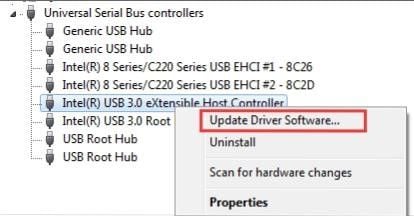- Speech Technology Center Usb Devices Driver Download Windows 7
- Speech Technology Center Usb Devices Driver Downloads
- Speech Technology Center USB Devices Driver Download
Adaptive Technology Station
Speech Technology Center introduces its brand new technologies for compact and large scale biometric solutions. VoiceGrid Nation — country-wide voice database management and voice identification system; VoiceGrid Local — Automated Voice Biometric System; VoiceGrid X — a stand-alone application for speaker identification. Patterson Technology Center 1201 Althoff Drive Effingham, IL 62401 800.475.5036 3. Connect the camera to the computer. The camera should auto load the driver. If the camera driver does auto load please go to Step 12. If the camera does NOT auto load please got to Step 4. In Device Manager RMC over the USB 2820 Device and select Up Date.
Young customers with disabilities can use this station to browse the internet, watch movies or listen to music. Located in Youth Services.
Speech Technology Center Usb Devices Driver Download Windows 7
This computer is loaded with the following equipment and software:
- DVD/CD player
- eSSENTIAL Accessibility (Internet browser) with option to use a hands-free mouse (by moving your head in view of the built-in webcam)
- Microsoft Media Player
- Touchscreen interface (optional)
- Windows 7 (operating system)
This station is wheelchair accessible via a height-adjustable table. To get started, stop at the Youth Services desk.
BRAVE Station
To serve those with low vision, this computer offers various accessibility features and functionality. Located in Adult Services.
- Cursor size adjustment
- Mouse and keyboard control
- Screen display set to high-contrast and grayscale for maximum visibility
- Screen magnifier (20x)
- Text-to-speech screen reader
- ...and more
Software includes:
- Mac OS
- Browsers: Firefox, Google Chrome, Safari
- CD-RW/DVD drive
- Microsoft Office
- USB ports
Charging Stations
Numerous charging stations and power outlets are available to visitors throughout the library. You can use them to charge your smartphone, laptop or other electronic device. Service is free.
Common Access Card (CAC) Reader
This can be used while in the library to read the standard identification card issued to persons in the military including active duty uniformed service personnel, Selected Reserve, DoD civilian employees, and eligible contractor personnel. For details, visit the Ask Here desk on the second floor.
Download Station
This computer can be used to install software programs from a disc or USB drive. For details, see a staff member in the Technology Center.
Fax Machine
Cost is $0.20 per page (U.S./Canada) or $1.00 per page (International). Cash or credit card payments are accepted. For details, see a staff member in the Technology Center.
Firewire Cables
These can be checked out for use between PC devices and AV devices.For details, visit the Ask Here desk on the second floor.
Magnifier
A real-time magnifier is available to enlarge printed text. For details, see a staff member in the Technology Center.
Memory Card Readers
These can be checked out and used to download files from a memory card to a library computer. For details, visit the Ask Here desk on the second floor.
Mobile Options
Browse the library's collection with our mobile catalog or mobile app.
Office Supplies, Peripherals & Saving Devices

Headphones, power cords and mice can be checked out using your library card for in-library use.
When supplies available, you may purchase some items at the library such as pens, envelopes, headphones or saving devices (blank CDs, USB flash drives, etc.). See a staff member for details.
Photocopier
Available in various locations throughout the library.
- $0.10/black & white
- $0.25/color
Printing
You can print from any computer within the library.
- $0.10/black & white
- $0.25/color
You can also print to the library's printers using your own laptop.
Scanner
You can scan photos or documents, 11x17 inches or smaller. This service is free.
Formats available:
- DOC (Microsoft Word document)
- JPG (Note: This option only appears if Color is selected)
- PNG (Note: This option only appears if B&W is selected)
- Searchable PDF
- TIFF
Speech Technology Center Usb Devices Driver Downloads
Storage options:
- Google Drive
- Print ($.10/B&W, $.25/color)
- Smartphone
- USB drive
Typewriter
You can use a manual typewriter to fill out printed forms, type addresses for envelopes, etc. Located in the Technology Center.
-->This topic is intended for OEMs who want to build a Windows 10 system with USB Type-C connector and want to leverage OS features that allow for faster charging, power delivery, dual role, alternate modes, and error notifications through Billboard devices.
A traditional USB connection uses a cable with a USB A and USB B connector on each end. The USB A connector always plugs in to the host side and the USB B connector connects the function side, which is a device (phone) or peripheral (mouse, keyboard). By using those connectors, you can only connect a host to a function; never a host to another host or a function to another function. The host is the power source provider and the function consumes power from the host.
The traditional configuration limits some scenarios. For example, if a mobile device wants to connect to a peripheral, the device must act as the host and deliver power to the connected device.
The USB Type-C connector, introduced by the USB-IF, defined in the USB 3.1 specification, addresses those limitations. Windows 10 introduces native support for those features.
Feature summary
- Allows for faster charging up to 100W with Power Delivery over USB Type-C.
- Single connector for both USB Hosts and USB Devices.
- Can switch USB roles to support a USB host or device.
- Can switch power roles between sourcing and sinking power.
- Supports other protocols like DisplayPort and Thunderbolt over USB Type-C.
- Introduces USB Billboard device class to provide error notifications for Alternate Modes.
Official specifications
Hardware design
USB Type-C connector is reversible and symmetric.
The main component are: the USB Type-C connector and its port or PD controller that manages the CC pin logic for the connector. Such systems typically have a dual-role controller that can swap the USB role from host to function. It has Display-Out module that allows video signal to be transmitted over USB. Optionally it can support BC1.2 charger detection.
Consider recommendations for the design and development of USB components, including minimum hardware requirements, Windows Hardware Compatibility Program requirements, and other recommendations that build on those requirements.Hardware component guidelines USB
Speech Technology Center USB Devices Driver Download
Choose a driver model

Use this flow chart to determine a solution for your USB Type-C system.
| If your system... | Recommended solution... |
|---|---|
| Does not implement PD state machines | Write a client driver to the UcmTcpciCx class extension. Write a USB Type-C port controller driver |
| Implements PD state machines in hardware or firmware and support USB Type-C Connector System Software Interface (UCSI) over ACPI | Load the Microsoft provided in-box drivers, UcmUcsiCx.sys and UcmUcsiAcpiClient.sys. See UCSI driver. |
| Implements PD state machines in hardware or firmware, but either does not support UCSI, or support UCSI but requires a transport other than ACPI | Write a client driver for the UcmCx class extension. Write a USB Type-C connector driver Write a USB Type-C Policy Manager client driver |
| Implements UCSI but requires a transport other than ACPI | Write a client driver to the UcmUcsiCx class extension. Use this sample template and modify it based on a transport that your hardware uses. Write a UCSI client driver |
Bring up drivers
USB Function driver bring-up is only required if you support USB Function mode. If you previously implemented a USB Function driver for a USB micro-B connector, describe the appropriate connectors as USB Type-C in the ACPI tables for the USB Function driver to continue working.
For more information, see instructions about writing a USB Function driver.
USB Role-Switch driver bring-up is only required for devices that have a Dual Role controller that assumes both Host and Function roles. To bring-up the USB Role-Switch driver, you need to modify the ACPI tables to enable the Microsoft in-box USB role-switch driver.
For more information, see the guidance for bringing up the USB Role Switch Driver.
A USB Connector Manager Driver is required for Windows to manage the USB Type-C ports on a system. The bring-up tasks for a USB Connector Manager driver depend on the driver that you choose for the USB Type-C ports: The Microsoft in-box UCSI (UcmUcsiCx.sys and UcmUcsiAcpiClient.sys) driver, a UcmCx client driver, or a UcmTcpciCx client driver. For more information, see the links in the preceding section that describe how to choose the right solution for your USB Type-C system.
Test
Perform various functional and stress tests on systems and devices that expose a USB Type-C connector.
Test USB Type-C systems with USB Type-C ConnEx - Run USB tests included in the Windows Hardware Lab Kit (HLK) for Windows 10.
Run USB function HLK tests with a C-to-A cable (search for Windows USB Device in the HLK
Certification/ComplianceAttend Power Delivery and USB Type-C compliance workshops hosted by the standards bodies.
See also
